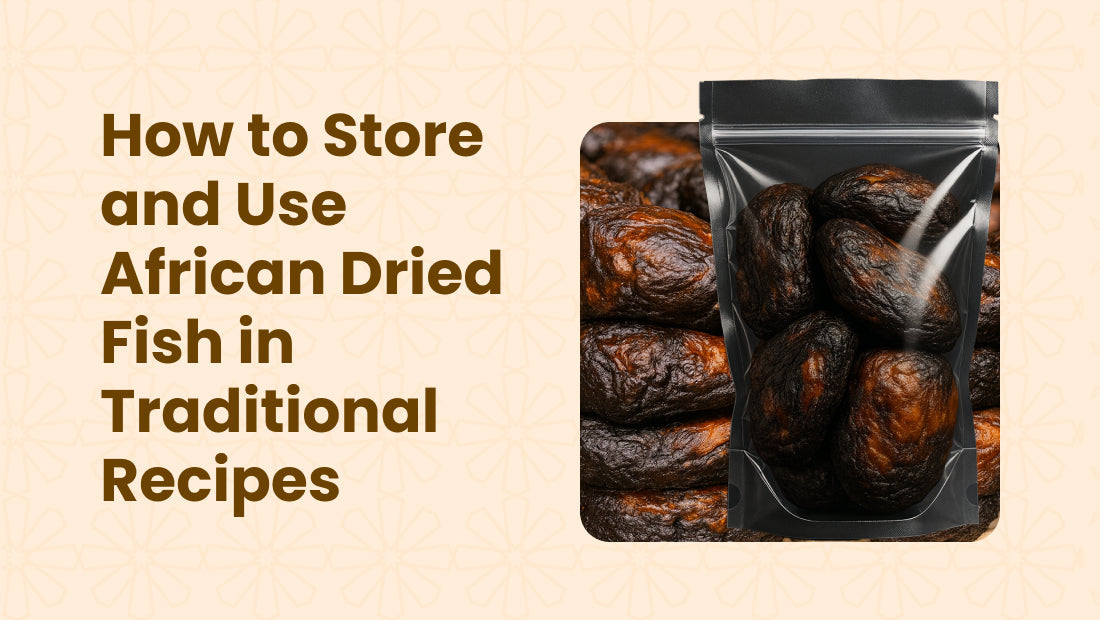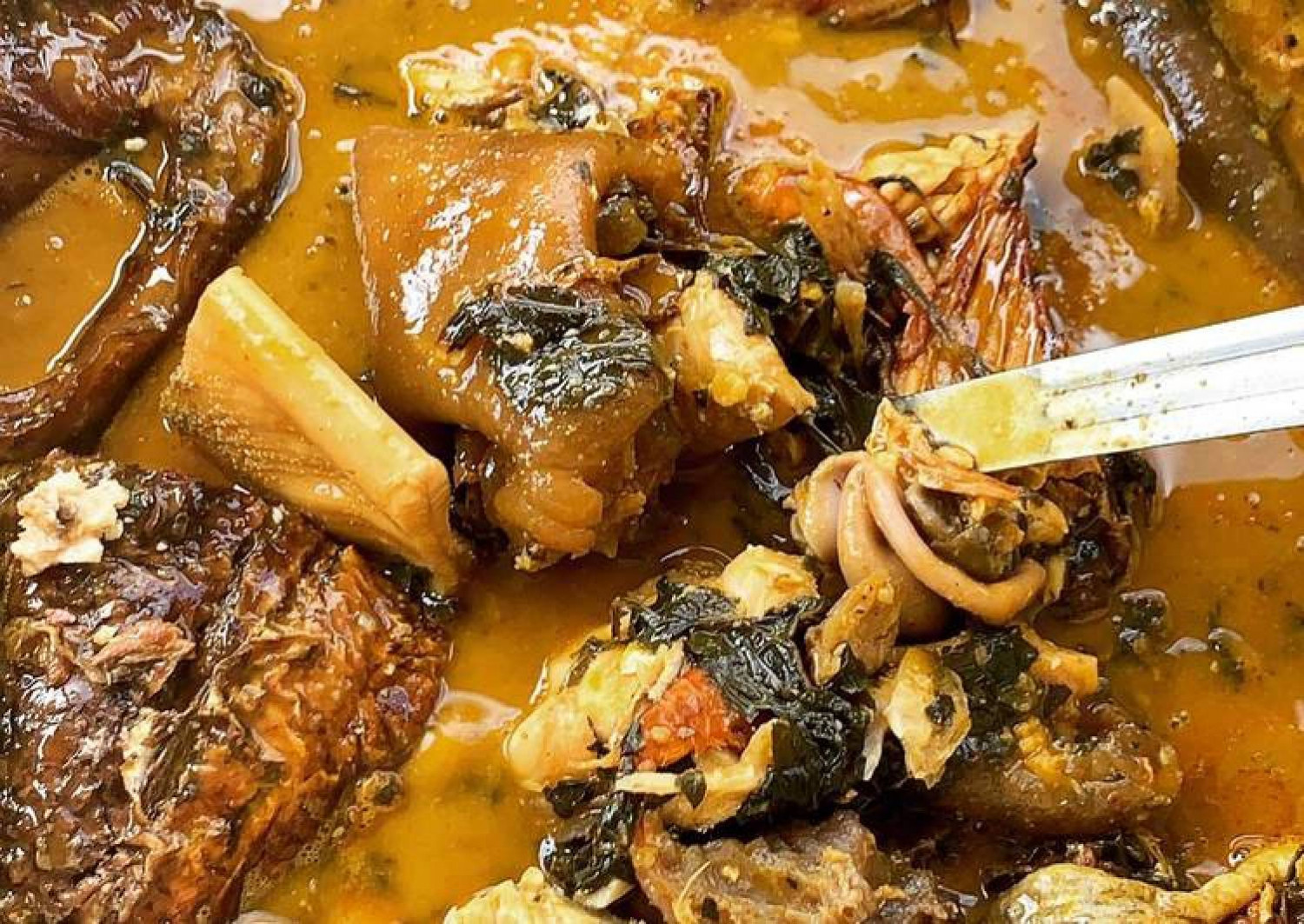
How to Store and Use African Dried Fish in Traditional Recipes
Share
African dried fish is a culinary staple that carries deep cultural history and rich flavors across many regions and countries in Africa. Loved for its unique umami and aromatics, dried fish is not just a food ingredient but a traditional treasure passed down through generations. This blog explores the fascinating history of African dried fish, how it’s traditionally prepared, where it’s used, and offers practical advice on storage and cooking, along with an extensive look at the delicious dishes that come alive with dried fish.

Also read: The Best Way to make Ofe-Onugbu (Bitterleaf) Soup from Scratch
A Taste of History: The Story of African Dried Fish
The practice of drying fish is one of the oldest food preservation methods worldwide, having roots tracing back to ancient times. In Africa, drying fish evolved as a practical solution to preserve protein-rich foods in tropical climates where refrigeration was historically unavailable. The sun and smoke were the natural preservers before modern appliances.

Image from: Shutterstock
Dried fish not only helped extend the shelf life of perishable fish but also became an essential trade commodity linking coastal and inland communities. Countries like Nigeria, Ghana, Senegal, Cameroon, and regions around Lake Chad developed distinct dried fish products such as stockfish, obambo, bonga, and koobi, often associated with particular local fish species.
Importantly, dried fish carried symbolic value during hard times—for instance, during the Nigerian Biafran War, stockfish supplies were life-saving, rich in protein and nutrients, where fresh food was scarce. This enduring legacy ensures African dried fish remains beloved in kitchens worldwide today.
Traditional and Modern Methods of Drying Fish
There are various traditional methods used in Africa to dry fish, each adapted to the local environment and resources:
- Sun Drying: This is the most prevalent method where fish is cleaned, sometimes salted, and left exposed on racks or nets under the sun for several days. The intense sun reduces the moisture content drastically, making fish last for months without refrigeration.
- Smoke Drying: Smoke-drying combines smoking and drying. Fish is hung in smoking huts or chambers where wood smoke slowly dries it while imparting smoky flavors. This method enhances preservation while adding complexity to the taste.
- Solar Tunnel Drying: A more modern adaptation, solar tunnel drying uses enclosed tunnels with solar heat, increasing hygiene and reducing contamination risks while maintaining traditional drying benefits.
- Use of Natural Preservatives: Some fish are rubbed with turmeric, chili powders, or immersed in brine solutions before drying to inhibit bacterial growth and add flavor.
After drying, fish is packed in airtight containers or polythene bags to avoid moisture absorption before use or sale.
African Regions and Countries That Use Dried Fish
Dried fish is widely used across Africa, but its importance and types vary by region:

Image from: Flickr
- West Africa: Countries like Nigeria, Ghana, Senegal, and Sierra Leone prominently incorporate dried fish in cuisines. Nigerian soups and stews (like egusi, ogbono, and banga soup) feature dried fish for depth and umami. Ghanaian dishes like light soup and palm nut soup also use it.
- East Africa: In Kenya and Tanzania, dried tilapia (locally "obambo" or "obambla") is common and used in stews or grilled dishes.
- Central Africa: Cameroon’s coastal regions use smoked and dried fish in traditional dishes alongside fresh fish varieties.
- Sahelian and Northern Africa: Fermented dried fish products are also common in parts of Northern Nigeria, Mali, and Senegal, adding a pungent, treasured flavor to soups and sauces.
This ingredient crosses cultural boundaries and is crucial to the identity and economy of fishing communities.
How to Store African Dried Fish
Proper storage is key to maintaining the quality and flavor of dried fish:
- Keep Dry: Store dried fish in a cool, dry place away from moisture, which can cause mold and spoilage.
- Use Airtight Containers: Plastic containers or sealed bags prevent moisture and pests from entering.
- Refrigeration: While not always necessary for dried fish, refrigeration or freezing extends shelf life, especially in humid climates.
- Avoid Strong Odors: Store away from ingredients that may absorb or clash with the pungent aroma of dried fish.
- Inspect Before Use: Always check for mold or a bad smell before cooking.
Using African Dried Fish in Traditional Recipes
Dried fish is celebrated for the powerful flavor it brings to dishes. It’s often rehydrated or added directly to stews and soups to infuse rich umami.
Popular recipes featuring African dried fish:
- Egusi Soup: Ground melon seeds soup enriched with vegetables, meat, and chunks of dried fish for a smoky, savory twist.

Image from: Cookpad
- Ogbono Soup: A thick, slippery soup made with wild mango seeds, often enhanced by dried fish and stockfish for depth.

Image from: Sisi Jemimah
- Bitterleaf Soup: Dried fish added to traditional soup made with bitterleaf vegetables and assorted meats.

Image from: Rhegzor
- Palm Nut Soup (Banga Soup): A rich, oily palm fruit soup with dried fish and meat.

Image from: Rozy's Kitchen
- Fish Stew: In coastal areas, dried fish stewed with tomatoes, onions, and peppers forms a hearty sauce for rice or yams.

Image from: Dobby's Signature
- Okra Soup: Often cooked with dried fish to add complexity to the slimy-textured delicacy.

Image from: a Food Blog
- Efo Riro: Nigerian spinach stew where smoked and dried fish elevate flavors.

Image from: Chinwe Uzoma Kitchen
Tips for Cooking with Dried Fish
- Soak Before Use: Rinse or soak dried fish in warm water to remove excess salt and soften texture.
- Debone and Flake: Remove bones carefully after soaking for easier eating.
- Add Early: Dried fish should be added early during cooking to give time for flavor to infuse.
- Complement with Fresh Ingredients: Balance the strong taste of dried fish with fresh vegetables, herbs, and spices for well-rounded dishes.
Nutritional Benefits
Dried fish is nutrient-dense—rich in high-quality protein, omega-3 fatty acids, and essential minerals like calcium and iron. Its long shelf life makes it a valuable food source in areas with limited refrigeration, providing affordable nutrition.
Where to Buy Quality African Dried Fish and Stockfish: Lafriquemarket Has You Covered
For anyone looking to cook authentic African dishes using dried fish or stockfish, sourcing quality ingredients is key. Lafriquemarket.com specializes in providing a wide range of genuine African food staples, including premium dried fish and stockfish products that are perfect for traditional recipes.
Here are some of the stockfish varieties available at Lafriquemarket that make excellent additions to your kitchen pantry:
- Stockfish Large (Salted Dry Cod)
- Stockfish Small pieces (Salted dry cod parts)
- Stockfish Round (Whole dry cod)
Each of these products undergoes careful drying and selection to preserve taste and nutritional quality. With Lafriquemarket, you can conveniently order these authentic dried fish products online, shipped fresh to your doorstep, ready to transform your traditional African recipes.
Additionally, Lafriquemarket offers complementary cooking ingredients — dried crayfish, palm oil, spices, and local seasonings — that perfectly pair with dried fish to create rich, flavorful meals.
Explore the full range of African cooking essentials at Lafriquemarket’s fish collection and bring home the true taste of Africa with ease.
